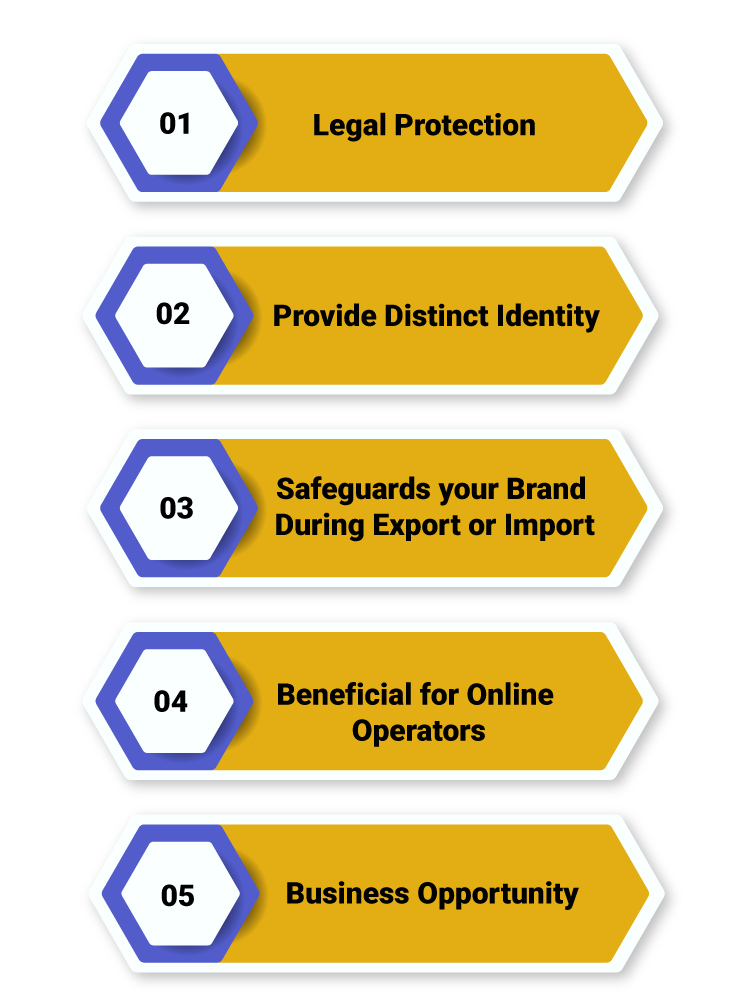An Overview of International Trademark Registration
Trademark Registration is territorial in nature that means if you need separate applications for Trademark Registration in each country where you want to register your Trademark. If you plan to market globally, then it is vital to register your Trademarks in those nations. Generally, the party who registers a mark or logo first owns it. Hence, it is essential to register your Trademark in each country your company considers to be a potential and key market. A domestic Trademark Registration stops at the country’s border and does not offer rights to the Trademark owner outside the nation in which it is registered.
For example, a Trademark originating from India can be safeguarded internationally via International Trademark Registration. The International Trademark application is filed through WIPO (World Intellectual Property Organisation) under Madrid Protocol. WIPO is the international forum for IP (Intellectual Property) service by United Nations (UN) with 192 member states.
When do you need to Use International Trademark Registration?
International Trademark Registration is not a requirement if all of your customers come from India; it is probably not worth your money & time to register globally. However, if you sell online, your Trademarked products or services are available at least viewable globally. So, International Registration is a good idea. Doing business in other countries outside India (your home country) means you should probably use the International Trademark Registration process.
What is a Madrid Protocol?
Madrid Protocol is a global treaty designed to clarify the process of International Trademark Registration. Using this process, the applicants are able to complete a single application in their domestic language that can be applied to over 122 member countries. It is vital to remember that International Trademark protection can only be obtained for countries and regions which have joined the Madrid System. While the Madrid Protocol clarifies the application process, it has nothing to do with approvals. Those are still made on a nation-by-nation basis.
Member countries under Madrid Protocol
WIPO provides a cost-effective single application system for attaining and maintaining Trademark Registrations in up to 122 member countries. The Madrid Union presently has 106 members, covering 122 countries.
Following is the list of all 106 members of the Madrid Protocol:
- Afghanistan
- Germany
- Oman
- African Intellectual Property Organization (OAPI)
- Ghana
- Philippines
- Albania
- Greece
- Poland
- Algeria
- Hungary
- Portugal
- Antigua and Barbuda
- Iceland
- Republic of Korea
- Armenia
- India
- Republic of Moldova
- Australia
- Indonesia
- Romania
- Austria
- Iran
- Russian Federation
- Azerbaijan
- Ireland
- Rwanda
- Bahrain
- Israel
- Samoa
- Belarus
- Italy
- San Marino
- Belgium
- Japan
- Sao Tome and Principe
- Bhutan
- Kazakhstan
- Serbia
- Bosnia and Herzegovina
- Kenya
- Sierra Leone
- Botswana
- Kyrgyzstan
- Singapore
- Brazil
- Lao People’s Democratic Republic
- Slovakia
- Brunei Darussalam
- Latvia
- Slovenia
- Bulgaria
- Lesotho
- Spain
- Cambodia
- Liberia
- Sudan
- Canada
- Liechtenstein
- Sweden
- China
- Lithuania
- Switzerland
- Colombia
- Luxembourg
- Syrian Arab Republic
- Croatia
- Madagascar
- Tajikistan
- Cuba
- Malawi
- Thailand
- Cyprus
- Malaysia
- Tunisia
- Czech Republic
- Mexico
- Turkey
- Democratic People’s Republic of Korea
- Monaco
- Turkmenistan
- Denmark
- Mongolia
- Ukraine
- Egypt
- Montenegro
- United Kingdom
- Estonia
- Morocco
- United States of America
- Eswatini
- Mozambique
- Uzbekistan
- European Union
- Namibia
- Vietnam
- Finland
- Netherlands
- Zambia
- France
- New Zealand
- Zimbabwe
- Gambia
- North Macedonia
- Georgia
- Norway
Who can File International Trademark in India?
Any Indian company or any legal entity can apply for an International Trademark if they have registered Trademark/if they have filed an application for Trademark Registration in India.
Advantages of International Trademark Registration
Following are some vital advantages of International Trademark Registration:

- Legal Protection: This Registration legally safeguards your registered Trademark from any infringement by 3rd It is easy to prove them right in court if the Trademark is registered. Therefore, before going via the legal process to fight against Trademark Infringement, it is vital to make sure that the Trademark (logo, design, word, or slogan) is registered.
- Provide Distinct Identity: With the help of International Trademark Registration, your product or business gets recognition globally.
- Safeguards your Brand During Export or Import: This Registration protects your brand or business from counterfeits. In case of any Trademark Infringement conducted during import or export, you have the right to take lawful action against such violation or infringement.
- Beneficial for Online Operators: This Registration plays an essential role in the growth of an e-commerce company or business. If you are indulged in selling products or goods online, then somehow, it covers the way for your product or item to be available to international customers. Once you have got appreciation & recognition in the global market, it becomes possible for your Trademark to gain massive popularity. So it is vital to register your Trademark internationally as soon as possible to avoid any confusion amongst the customers.
- Business Opportunity: A successful Trademark provides your company or business with a golden chance to earn money and gain popularity. Companies like Nike, McDonald, or Puma has earned royalties through licensing agreement.
Requirements for International Trademark Registration
- If you want to file an application for International Trademark Registration, then it is a compulsory requirement that you have either registered Trademark or have applied for the same Trademark in the IPO (Intellectual Property Office) of the country origin. i.e., the country from which the Trademark Application will be filed.
- The individual planning to apply for this Registration must have either a personal/business connection with a minimum of one of the contracting parties of the Madrid System. The nation they have such connection with will be the place they will apply from, i.e. office of origin. This connection can be described in any of the following forms:
- The applicant must be a citizen of the contracting party;
- The application is a domicile of the contracting party;
- The applicant or candidate has a business in the contracting party, and such business can either be an effective or actual industrial/commercial organisation.
International Trademark Registration System
The International Trademark Registration System consists of three vital parts. Therefore, we have provided the three essential parts below:
Part 1: Trademark Search: It is relevant to mention that how Trademark Search is vital before making an application for International Trademark Registration. It is recommended to make sure that there is no identical Trademark registered already in the Trademark Registry. The applicant or owner of Trademark can search for that on the International Brand Database of the WIPO and ensure that there is no identical Trademark registered in any of the proposed markers where the applicant is planning to apply their application form. This search can rely on the three factors as mentioned below:
- The image used in the Trademark;
- The text used in the Trademark;
- The products or services class.
Part 2: File Application for Registration: Once the availability of Trademark is verified, then you can file an application for the International Trademark Registration. The most vital requirement is that the Trademark is either applied or registered in the home country. One can choose for any procedure of the Registration and can apply via the Madrid System if they are local of the eligible country. The application shall be filed with the nation of origin's local Trademark Office, and they shall forward it to WIPO after duly verifying it. After that, further analysis is done by the WIPO and the nation's institutions where it is applied for.
Part 3: International Trademark Management: Once the Registration is successfully completed, then its suitable management is vital. The management is very centralised and easy under the Madrid System. The rules are clear and correctly described, together with the suitable forms for each feature. The management of Trademark involved the following factors:
- Trademark Renewal for every ten years;
- The digital payment of the fees;
- Transfer of ownership;
- To expand the geographical range by applying in more nations;
- Trademark Cancellation;
- Appointment of new representatives.
Procedure for International Trademark Registration
Following is the procedure for International Trademark Registration:
Step 1: Applying through National Trademark Office
The application for the International Trademark Registration is subjected to be filed through an application form. All the relevant information of this application should be filed carefully & must match with the Registration at the Indian Trademark Office. All the details such as names & descriptions of the mark, class of products or services, priority date & other particulars and then are verified to ensure that it matches with that of the basic Trademark application. If it matches, the Indian Trademark Office (ITO) would issue a certification mentioning the international application and would forward the application to WIPO.
Step 2: Certification & Submission to the WIPO
WIPO will conduct an intensive and formal examination to check the compliance of the applicant with the requirements or pre-requisites of the Madrid Protocol and other regulations. If they find any inconsistencies, they will notify the applicant, and a time of three months will be granted to rectify or correct the same and if the applicant will be considered to be abandoned. And, if it complies with the necessities of Madrid Protocol and other details provided is also in compliance, the same will be listed or recorded in the International Trademark Register and published in the WIPO Gazette of International Marks. They will send a notification to Trademark Offices in the nations as per the applicant’s request to extend the mark protection. Also, they will send an International Registration Certificate to the applicant. This is not the Trademark Registration in the desired nations but a vital part of the entire process.
Step 3: Further Examination
After submission, a significant examination will be done by the offices of the respective nations as an application is filed directly and would notify WIPO within the time duration of 12 to 18 months. Then the identical process will be followed like that of when applied for in India. WIPO would record the decision, whether rejected or approved and then convey it to the Trademark applicant. If approved, the statement is granted for ten years, and if it is denied or refused, WIPO will not intervene in the following proceedings between the Trademark Office of the selected member country and the applicant. Once the Trademark is registered successfully, its effective management is vital. That comprises Trademark Renewal in every ten years, payment of requisite fees via digital mode, expansion of geographical range by filing in more nations, ownership transfer, the appointment of the new representative, etc.
International Trademark Registration Fees
Under the Madrid System, the appropriate fees for processing International Trademark application constitute of three elements, and you can check the same below:
- Basic Application Fee: This fee is for the mark to be registered;
- Complementary Fee: This fee is for every contracting party (country) the application is made for, i.e., the jurisdictions one wants to safeguard the mark in. In some situations, these fees are individual fees;
- Supplementary Fee: This is for every class of goods/services Trademark applied for Registration. There might also be some handling charges imposed by the office of origin for checking & forwarding the application to the WIPO.
Frequently Asked Questions
You can register your Trademark globally through Madrid System to register the Trademark in multiple countries.
The application for the Registration is filed through WIPO under Madrid Protocol.
Yes, foreign individuals or companies can apply for Trademark Registration in India.
Yes, in 2013, India joined Madrid System.
The Madrid Protocol is regulated by the International Bureau of (WIPO); it's an international treaty that permits a Trademark owner to seek Registration in any of the nations that have joined this protocol by filing a single application.
It is valid for ten years from the date of application.
Madrid monitor provides the status in real-time of an international application being processed by WIPO and the status in the proposed nation or regional offices.
No, it is not necessary for every Trademark owner, but it is advisable if you have strong plans to expand your business in other countries.
NO, it is not the only way; you can also submit a separate claim in the regional office of the proposed country.
It is the Trademark Office of the applicant for International Trademark Registration.
English, Spanish, French.
The applicant can submit the fees to the International Bureau of WIPO.


